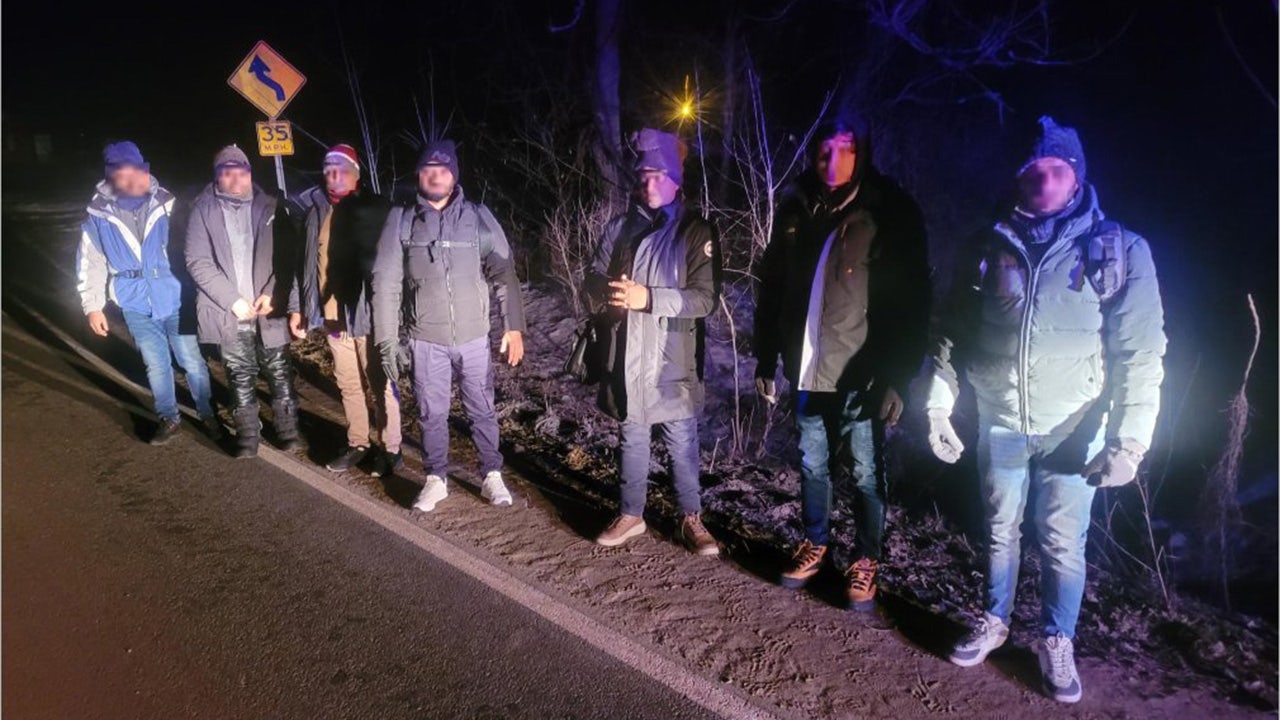Laurent de Brunhoff, the French artist who nurtured his father’s creation, a beloved, very Gallic and very civilized elephant named Babar, for nearly seven decades — sending him, among other places, into a haunted castle, to New York City and into outer space — died on Friday at his home in Key West, Fla. He was 98.
The cause was complications of a stroke, said his wife, Phyllis Rose.
Babar was born one night in 1930 in a leafy Paris suburb. Laurent, then 5, and his brother, Mathieu, 4, were having trouble sleeping. Their mother, Cécile de Brunhoff, a pianist and music teacher, began to spin a tale about an orphaned baby elephant who flees the jungle and runs to Paris, which is conveniently located nearby.
The boys were enthralled by the story, and in the morning they raced off to tell their father, Jean de Brunhoff, an artist; he embraced the tale and began to sketch the little elephant, whom he named Babar, and flesh out his adventures.
In Paris, Jean imagined, Babar is rescued by a rich woman — simply referred to as the Old Lady — who introduces him to all sorts of modern delights. Armed with the Old Lady’s purse, Babar visits a department store, where he rides the elevator up and down, irritating the operator: “This is not a toy, Mr. Elephant.” He buys a suit in “a becoming shade of green” and, though the year is 1930, a pair of spats, the natty, gaitered footwear of a 19th-century gentleman.
He drives the Old Lady’s automobile, enjoys a bubble bath and receives lessons in arithmetic and other subjects. But he misses his old life and weeps for his mother, and when his young cousins Arthur and Celeste track him down, he returns to the jungle with them — but not before outfitting Arthur and Celeste in fine clothes of their own.
Back home, the old king of the elephants has died after eating a bad mushroom (these things tended to happen) and the rest of the elephants, impressed by Babar’s modernity — his fine green suit, his car and his education — make him their new king. Babar asks Celeste to be his queen.
“Histoire de Babar” (“The Story of Babar”), an oversized, gorgeously illustrated picture book in which Babar’s escapade is recounted in Jean de Brunhoff’s looping script, was published in 1931. Six more picture books followed before Jean died of tuberculosis in 1937, when he was 37 and Laurent was just 12.
The last two books were only partly colored at Jean’s death, and Laurent finished the job. Like his father, Laurent trained to be a painter, working in oils and exhibiting his abstract works at a Paris gallery. But when he turned 21, he decided to carry on the adventures of Babar.
“If I became a writer and artist of children’s books,” Mr. Laurent wrote in 1987 for the catalog that accompanied a show of his work at the Mary Ryan Gallery in Manhattan, “it was not because I had in mind to create children’s books; I wanted Babar to live on (or, as some will say, my father to live on). I wanted to stay in his country, the elephant world which is both a utopia and a gentle satire on the society of men.”
His first effort, “Babar’s Cousin: That Rascal Arthur,” was published in 1946. Mr. de Brunhoff would go on to write and illustrate more than 45 more Babar books. For the first few years, many readers didn’t realize that he was not the original author, so completely had he realized Babar’s world and his essence — his quiet morality and equanimity.
“Babar, c’est moi,” Mr. de Brunhoff often said. By all accounts, artist and elephant shared the same Gallic urbanity and optimistic outlook.
By the 1960s, Babar was a very famous elephant indeed.
Charles de Gaulle was a fan. The Babar books, he said, promoted “a certain idea of France.” So was Maurice Sendak, though Mr. Sendak said that for years he was traumatized by Babar’s origin story: the brutal murder of his mother by a hunter.
“That sublimely happy babyhood lost, after only two full pages,” Mr. Sendak wrote in the introduction to “Babar’s Family Album” (1981), a reissue of six titles, including Jean’s original.
Mr. Sendak and Mr. de Brunhoff became friends, however, and the latter encouraged the former, as Mr. Sendak wrote, to ditch his “frantic Freudian dig.”
“I calmed him down,” Mr. de Brunhoff told The Los Angeles Times in 1989. “I said bluntly that the mother died to leave the little hero to struggle with life on his own.”
There were other critiques. Many charged that Babar was an avatar of sexism, colonialism, capitalism and racism. Two early works were particularly offensive: Jean de Brunhoff’s “The Travels of Babar” (1934) and Laurent de Brunhoff’s “Babar’s Picnic” (1949) both depicted “savages” drawn in the cruel style of their times, as cartoon images of Africans. In the late 1960s, when Toni Morrison, then a young editor at Random House, Babar’s publisher, objected to the imagery in “Babar’s Picnic,” Mr. de Brunhoff asked that it be taken out of print. And he made sure to excise the racist scenes from “The Travels of Babar” when that title was included in “Babar’s Family Album.”
“Should We Burn Babar?” the author and educator Herbert Kohl wondered in the title of a 1995 book subtitled “Essays on Children’s Literature and the Power of Stories.” Well, no, he concluded, but he nonetheless argued that Babar’s stories were elitist for glorifying capitalism and unearned wealth. Where did the Old Lady get her money? Mr. Kohl asked, annoyed by the implication “that it is perfectly normal and in fact delightful that some people have wealth they do not have to work for.”
Nonsense, Mr. de Brunhoff told The Los Angeles Times, in response to an earlier Marxist analysis of his stories, “These are stories, not social theory.”
They were also works of art, and critics compared Mr. de Brunhoff’s use of color and his naïve style to painters like Henri Rousseau.
“With Bemelmans’s ‘Madeline’ and Sendak’s ‘Where the Wild Things Are,’” Adam Gopnik of The New Yorker wrote in 2008, when the Morgan Library exhibited the sketches and maquettes of both Jean and Laurent du Brunhoff’s early efforts, “the Babar books have become part of the common language of childhood, the library of the early mind.”
Like Babar, Laurent de Brunhoff was born in Paris — on Aug. 30, 1925, into a family of artists and publishers. His father’s siblings were all in the magazine business: his brothers, Michel and Maurice, were the editors, respectively, of French Vogue and La Décor Aujourd’Hui, a magazine of art and design; his sister, Cosette, a photographer, was married to the director of Les Jardins de Modes, a fashion magazine, and it was under that magazine’s imprint that Babar was first published.
Laurent worked differently from his father, who conceived his stories as a whole, narration and pictures in tandem. (Jean had also wanted to include his wife as his co-author, but she adamantly refused. “My mother was absolutely against it,” Laurent said, “because she thought that even if she helped the idea, the whole creation was my father’s.”) For Laurent, the idea and the images came first — what if Babar were abducted by aliens, or practiced yoga? — and he then began to sketch and paint what that might look like. When he married his second wife, Ms. Rose, a professor emerita of English at Wesleyan University, they often collaborated on the text.
The couple met at a party in Paris in the mid-1980s — Ms. Rose was working on a biography of Josephine Baker — and fell hard for each other. “After dinner we sat down on the sofa together,” Mr. de Brunhoff told an interviewer in 2015. “She said, ‘I love your work.’ I said, ‘I don’t know your work, but I love your eyes.’ And that was the start of it.”
Mr. de Brunhoff joined Ms. Rose in Middletown, Conn., in 1985, and brought Babar with him. The couple married in 1990 and later lived in New York City and Key West.
In 1987, Mr. de Brunhoff sold the rights to license his elephant to a businessman named Clifford Ross, who then sold those rights to a Canadian company, Nelvana Ltd., with the understanding that Mr. Ross would continue to be involved in the conception of future products. What followed was what The New York Times described as “an elephantine array” of Babar-abilia — including Babar pajamas and slippers, wallpaper and wrapping paper, perfume, fruit drinks, backpacks, blankets and bibs. There was “Babar: The Movie” (1989), which critics said was boring and violent, and, that same year, a television series, which critics said was less boring and less violent.
And then there was litigation. Mr. Ross found Nelvana’s creations tacky and degrading to Babar’s wholesome image, as he charged in a lawsuit. Mr. de Brunhoff, with typical equanimity, kept out of the fray.
“Celesteville is a sort of utopian city, a place where there’s no robbery or crime, where everyone has a nice relationship with the other, so there’s really no need for lawyers there,” Mr. du Brunhoff told The New York Times.
Federal District Court Judge Kenneth Conboy agreed.
“In the world of Babar, all colors are pastel, all rainstorms are brief, and all foes are more or less benign,” he wrote in his decision, ruling that Nelvana had unfairly excluded Mr. Ross in the licensing. “The story lines celebrate the persistence of goodness, work, patience and perseverance in the face of ignorance, discouragement, indolence and misfortune. Would that the values of Babar’s world were evident in the papers filed in this lawsuit.”
In addition to his wife, Mr. de Brunhoff is survived by his brothers, Mathieu and Thierry-Jean; a daughter, Anne de Brunhoff, and son, Antoine de Brunhoff, from his first marriage, to Marie-Claude Bloch, which ended in divorce; a stepson, Ted Rose; and several grandchildren.
“Babar and I both enjoy a friendly family life,” Mr. de Brunhoff wrote in 1987. “We take the same care to avoid over-dramatization of the events or situations that do arise. If we take the correct, efficient steps, we both believe that a happy end will come. When writing a book, my intention is to entertain, not give a ‘message.’ But still one can, of course, say there is a message in the Babar books, a message of nonviolence.”
Babar’s stories have been translated into 18 languages, including Japanese and Hebrew, and have sold many millions of copies. Mr. de Brunhoff’s last book, “Babar’s Guide to Paris,” was published in 2017.
“Laurent’s idea of a good story,” Ms. Rose said by phone, “is this: Something bad happens, nobody panics, and it all turns out fine.”






